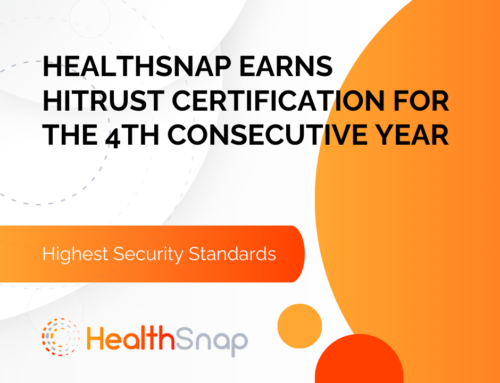Patient engagement and outreach refer to strategies and initiatives aimed at actively involving patients in their healthcare and promoting their participation in managing their chronic diseases. It involves fostering effective communication, providing education and support, and empowering patients to take an active role in their care. In the context of chronic diseases, patient engagement and outreach are vital for improving health outcomes, enhancing self-management skills, and reducing healthcare costs.
Key components of an effective patient engagement and outreach strategy include:
Effective Communication
Open and effective communication between healthcare providers and patients is essential for patient engagement. This involves actively listening to patients, addressing their concerns, and involving them in decision-making regarding their treatment plans. It also includes clear and understandable explanations of medical information, treatment options, and potential outcomes.
Education and Empowerment
Patient education is a vital component of engagement and outreach. Providing patients with information about their chronic disease, its management, and lifestyle modifications empowers them to make informed decisions about their care. Educational materials, workshops, and one-on-one counseling sessions can help patients better understand their condition, improve their self-management skills, and make healthy choices.
Shared Decision-Making
Involving patients in shared decision-making ensures that their preferences, values, and goals are considered when determining the best course of action for their chronic disease management. By collaborating with healthcare providers, patients become active participants in developing personalized care plans and treatment strategies that align with their needs and circumstances.
Self-Management Support
Patients with chronic diseases need support and guidance to effectively manage their conditions. Healthcare providers and the health system can offer tools, resources, and techniques to help patients set goals, monitor their symptoms, adhere to treatment plans, and make lifestyle changes. Self-management support also includes providing emotional support, addressing barriers to care, and promoting self-efficacy in disease management.
Use of Technology and Digital Health
Digital health tools, such as mobile applications, remote monitoring devices, and virtual care management platforms, can enhance patient engagement and outreach. These technologies enable patients to access educational materials, track their health metrics, receive reminders for medication adherence, and communicate with their healthcare providers. Technology facilitates remote patient monitoring, telehealth consultations, and virtual support groups, making patient care more accessible and convenient for patients, and supporting improved health outcomes.
Peer Support and Community Engagement
Engaging patients in support groups and connecting them with peers who share similar experiences can provide a sense of belonging and support. Peer support and community engagement initiatives create opportunities for patients to learn from each other, exchange information, share coping strategies, and receive emotional encouragement. This social support network fosters resilience and empowers patients to actively manage their chronic diseases for better health outcomes.
Continuous Follow-Up and Outreach
Regular follow-up and proactive outreach by healthcare providers are vital for sustaining patient engagement. This includes scheduled appointments, reminders for medication refills or preventive screenings, and outreach programs to identify patients who may be at risk or in need of additional support. Proactive outreach demonstrates the healthcare team’s commitment to patients’ well-being and helps address potential issues before they escalate.
Benefits of Patient Engagement and Outreach in Chronic Disease Management
Improved Health Outcomes: Active patient engagement as part of the health literate care model has been linked to improved health outcomes, including better disease control, reduced hospitalizations, and improved quality of life for patients with chronic diseases.
Enhanced Patient Satisfaction: Engaging patients in their care and involving them in decision-making processes increases satisfaction and confidence in healthcare providers. Patients feel valued, heard, and empowered, leading to a more positive healthcare experience.
Adherence to Treatment Plans: Patient engagement and outreach initiatives support patients in understanding and adhering to their treatment plans, including medication regimens, lifestyle modifications, and self-monitoring practices. Improved adherence contributes to better disease management and reduces the risk of complications.
Cost Savings: Engaged patients are more likely to actively manage their chronic diseases, leading to fewer emergency room visits, hospitalizations, and healthcare costs. Patient engagement initiatives help optimize healthcare resource utilization and reduce unnecessary utilization of services.
Shared Responsibility: Patient engagement and outreach recognize patients as active partners in their care. By actively involving patients, healthcare providers foster a sense of shared responsibility, with patients taking ownership of their health and well-being.

Virtual Care Platforms and Remote Patient Monitoring: A Powerful Tool to Improve Patient Engagement and Outreach
Virtual care platforms and Remote Patient Monitoring play a strategic role in improving patient engagement and outreach, particularly in the context of chronic diseases, such as diabetes, hypertension, heart disease, and chronic obstructive pulmonary disease. These technologies enable healthcare providers to connect with patients remotely, provide continuous monitoring, deliver educational resources, and foster communication and collaboration.
Here’s how an effective virtual care and Remote Patient Monitoring strategy can contribute to enhancing patient engagement and outreach:
Accessible and Convenient Care
Virtual care platforms remove geographical barriers and provide patients with convenient access to healthcare services. Patients can engage with healthcare providers from the comfort of their own homes, reducing the need for travel and eliminating time constraints. This accessibility encourages patients to seek care when needed, resulting in better engagement and improved health outcomes.
Continuous Monitoring and Early Intervention
Remote Patient Monitoring through cellular connected devices allows healthcare providers to monitor patients’ vital signs, symptoms, and health data in real time. This continuous monitoring enables early detection of potential issues and allows for timely intervention. By proactively addressing health concerns, healthcare providers can prevent complications, reduce hospitalizations, and improve patient outcomes.
Personalized Education and Self-Management
Virtual care platforms provide an avenue for delivering personalized education and self-management resources to patients. Through video content, interactive tools, and educational materials, patients can access information specific to their chronic condition. These resources empower patients to make informed decisions, adopt healthy lifestyle behaviors, and actively participate in managing their health, leading to improved self-management and engagement.
Secure Communication and Collaborative Care
Virtual care platforms offer secure messaging and teleconferencing capabilities, facilitating communication between patients and healthcare providers. This communication channel enhances patient engagement by allowing patients to ask questions, seek clarifications, and discuss concerns with their healthcare team. It also promotes collaborative care, enabling multidisciplinary teams to communicate and coordinate interventions effectively.
Timely Follow-up and Reminders
Virtual care platforms enable automated reminders for medication adherence, upcoming appointments, and preventive screenings. These reminders prompt patients to take necessary actions, enhancing engagement and improving compliance with treatment plans. Timely follow-up with patients through virtual visits or messaging helps healthcare providers assess progress, address concerns, and provide ongoing support.
Data-Driven Insights
Remote Patient Monitoring generates a wealth of data that can be analyzed to gain insights into patients’ health status, trends, and adherence to treatment plans. This data-driven approach enables healthcare providers to identify patterns, make data-informed decisions, and personalize interventions based on individual patient needs. It also facilitates proactive outreach to patients who may require additional support or health care interventions.

Patient Empowerment and Shared Decision-Making
Virtual care platforms empower patients by involving them in shared decision-making. Through teleconferencing or secure messaging, patients can discuss treatment options, express their preferences, and actively participate in determining their care plans. This patient-centered approach and patient activation measure fosters engagement, enhances patient satisfaction, and improves treatment adherence.
Peer Support and Community Engagement
Virtual care platforms can facilitate patient engagement by connecting individuals with similar conditions through virtual support groups or online communities. Peer support and community engagement provide emotional support, shared experiences, and a sense of belonging, fostering engagement and empowering patients to take an active role in managing their chronic conditions and making informed health decisions.
Strategies to Improve Patient Education and Empowerment through Virtual Care Platforms
Improving patient education and empowerment through virtual care platforms involves utilizing technology to deliver comprehensive and personalized educational resources, promote patient engagement, and support patients in taking an active role in their healthcare. Here are some strategies to enhance patient education and empowerment through virtual care platforms:
Interactive Educational Materials
-
Develop interactive and engaging educational materials, such as videos, animations, and infographics, to present information in a visually appealing and easily understandable format.
-
Utilize virtual reality or augmented reality technology to create immersive learning experiences that enhance patient understanding of complex medical concepts.
-
Offer interactive quizzes or assessments to reinforce learning and provide immediate feedback.
Personalized Content
-
Tailor educational content to each patient’s specific needs, preferences, and health literacy levels. Use data collected through virtual care platforms to customize the educational materials based on the patient’s condition, treatment plan, and progress.
-
Provide information in multiple languages to cater to diverse patient populations and ensure inclusivity.
-
Offer educational resources in different formats, such as written materials, audio recordings, or video presentations, to accommodate different learning styles.
Teleconferencing and Virtual Consultations
-
Conduct teleconferencing or video consultations to facilitate direct communication between healthcare providers and patients for educational purposes.
-
Use screen-sharing capabilities during virtual consultations to review medical reports, images, or diagnostic results, enabling patients to visualize and better understand their condition.
-
Encourage patients to ask questions and actively participate in discussions to foster a collaborative learning environment.
Remote Monitoring and Self-Management Tools
-
Integrate Remote Patient Monitoring devices (such as blood pressure monitors and blood glucose meters) into virtual care management platforms to enable patients to track their symptoms or medication adherence.
-
Provide patients with access to self-management tools, such as symptom trackers, medication reminders, or personalized care plans, through virtual care platforms.
-
Implement goal-setting features that allow patients to set health-related goals and track their progress over time, fostering a sense of ownership and empowerment.
Peer Support and Online Communities
-
Facilitate virtual support groups or online communities where patients can connect with peers who have similar conditions, providing a platform for sharing experiences, offering emotional support, and exchanging knowledge.
-
Encourage patients to engage in discussions, ask questions, and share insights within the online communities, fostering a sense of empowerment and community support.
-
Moderate online communities to ensure a safe and respectful environment for patients to engage and learn from one another.
Health Literacy and Plain Language
-
Use plain language when providing educational materials, avoiding medical jargon and complex terminology. Ensure that information is easily understandable for patients of varying health literacy levels.
-
Provide definitions or explanations of medical terms within the educational materials to promote comprehension of care management strategies.
-
Incorporate visual aids, diagrams, and real-life examples within clinical information systems to simplify and clarify information.
Ongoing Communication and Feedback
-
Establish regular communication channels through virtual care platforms, allowing patients to ask questions, provide feedback, and seek clarification.
-
Encourage patients to provide feedback on the educational resources, virtual care platform usability, and their overall experience to continuously improve and tailor the educational content.
-
Use patient feedback to refine educational materials, address common concerns, and enhance patient engagement.
Collaborative Care Planning
-
Use virtual care platforms to involve patients in shared decision-making processes, allowing them to actively participate in developing their care plans.
-
Provide patients with access to their electronic health records through virtual care platforms, enabling them to review their medical information, track progress, and actively engage in discussions about their treatment options.
-
Support patients in setting realistic goals and action plans, ensuring their preferences and values are considered in care planning.

Strategies to Improve Patient Compliance and Motivation for Self-Care through Virtual Care Management
Improving patient compliance and motivation for self-care is possible with virtual care management. Virtual care platforms can play a significant role in promoting adherence to treatment plans, empowering patients to take charge of their health, and fostering a commitment to self-care. Here are some strategies to enhance patient compliance and motivation for self-care through virtual care management:
Clear Treatment Plans and Goals
-
Provide patients with clear and concise treatment plans that outline the necessary steps, medications, lifestyle modifications, and self-care activities.
-
Set realistic goals in collaboration with patients, ensuring they understand the purpose and potential benefits of each goal.
-
Break down complex treatment plans into manageable steps to make them more approachable and easier to follow.
Personalized Care and Tailored Support
-
Utilize virtual care platforms to deliver personalized care, taking into account individual patient characteristics, preferences, and needs.
-
Offer tailored support resources, such as educational materials, videos, or interactive tools, that align with the patient’s condition, treatment plan, and goals.
-
Provide patients with access to self-management tools and reminders through virtual care platforms to support their daily routines and encourage adherence.
Continuous Monitoring and Feedback
-
Utilize Remote Patient Monitoring devices integrated into virtual care platforms to collect patient data, such as vital signs, symptom reports, or medication adherence.
-
Provide timely feedback and guidance based on the collected data to help patients track their progress, identify areas for improvement, and make necessary adjustments to their self-care practices.
-
Implement automated reminders and alerts through virtual care platforms to prompt patients to adhere to medication schedules, lifestyle modifications, or other self-care activities.

Health Education and Resources
-
Offer comprehensive health education materials and resources through virtual care platforms, covering various aspects of the patient’s condition, treatment, and self-care practices.
-
Utilize multimedia formats, such as videos, infographics, or interactive modules, to engage patients and enhance their understanding of important concepts related to their care.
-
Provide access to reputable online resources, support groups, or patient communities that offer additional information, guidance, and opportunities for shared experiences.
Behavioral Interventions and Motivational Techniques
-
Incorporate behavioral interventions into virtual care management, such as cognitive-behavioral therapy techniques, motivational interviewing, or goal-setting strategies, to promote positive behavioral changes.
-
Use motivational techniques, such as personalized feedback, positive reinforcement, or gamification elements, to encourage and reward patient engagement and adherence to self-care practices.
-
Engage patients in regular discussions about their motivations, barriers, and challenges related to self-care, and work collaboratively to develop strategies to overcome those challenges.
Cultivate Patient-Provider Relationships
-
Foster a strong patient-provider relationship through virtual care platforms, creating a supportive and collaborative environment.
-
Encourage open communication, active listening, and empathy during virtual consultations to address patient concerns, answer questions, and provide guidance.
-
Ensure patients feel comfortable discussing challenges or setbacks they may be experiencing and provide non-judgmental support and encouragement.
Continuous Follow-Up and Support
-
Schedule regular virtual follow-up appointments to monitor patient progress, address any concerns, and provide ongoing support.
-
Implement secure messaging or virtual chat functions within the Remote Patient Monitoring and Chronic Care Management platforms to enable patients to reach out with questions or seek clarification between appointments.
-
Offer remote support services, such as telephonic or virtual nurse consultations, to provide guidance and answer patient queries related to self-care practices.
Patient Engagement and Empowerment
-
Foster patient engagement and empowerment by involving patients in shared decision-making processes, allowing them to actively participate in their care planning and treatment choices.
-
Provide opportunities for patients to set their own goals, make decisions about their self-care activities, and take ownership of their health journey.
-
Offer resources and tools that promote self-efficacy, self-monitoring, and self-reflection, allowing patients to track their progress and celebrate achievements.
By implementing these strategies within virtual care management programs like RPM and CCM, healthcare providers can enhance patient compliance and motivation for self-care. Virtual care platforms offer unique opportunities to deliver personalized support, engage patients actively, and promote adherence to treatment plans, leading to improved health outcomes and patient satisfaction.
Choose HealthSnap to Power Your Virtual Care Management Program
Patient engagement and outreach are critical elements in the management of chronic diseases. By fostering effective communication, providing education and support, and empowering patients to actively participate in their care, healthcare providers can enhance patient outcomes, improve adherence to treatment plans, and promote self-management skills.
HealthSnap is helping healthcare providers implement effective patient engagement and outreach strategies through its industry-leading virtual care management platform. Empower your patients using HealthSnap’s integrated Remote Patient Monitoring (RPM) and Chronic Care Management (CCM) solutions.
To schedule a demo, call today at 888-780-1872 (Ext. 3) or click here to schedule a meeting.










